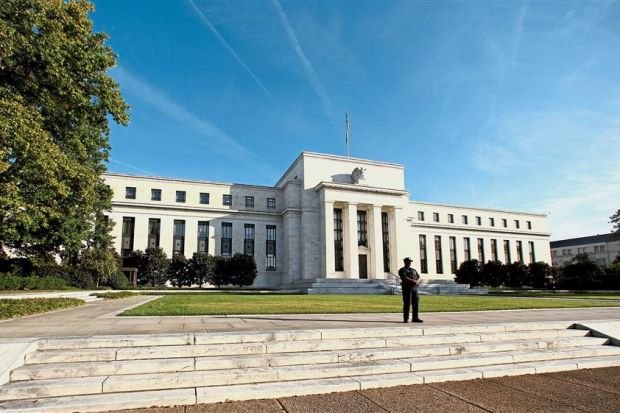
FINALLY, retirees can heave a sigh of relief. For almost 20 years, Malaysia’s prime interest rates have been low. Retirees who depend on the risk free returns from fixed deposits in banks have long suffered.
Last week, Bank Negara raised its overnight policy rate (OPR), which is the benchmark for banks to set their deposit and lending rates, by 0.25% higher. It is now 3.25%.
The increase marks the beginning of a slow start to further rate hikes.
This is the first rate hike since May 2016 and comes after global economic power houses such as the US, Europe and Japan have all signalled that they are ending a low interest rate environment.
Going forward, Bank Negara can only keep raising its rates, just like what is happening in the US and other economies. The situation will be similar in Malaysia where rates would only rise.
Since November 2005, Bank Negara’s OPR has been hovering at a tight range of between 3%. and 3.5%. Prior to that, the OPR had even gone down to as low as 2%.
The effect on retirees who depend on returns from risk free fixed deposits (FD) with commercial banks has been immense. Banks used to offer FD rates at less than 3%, something that retirees were not used to in the years after 2000.
Many retirees did not know what an era of low interest rate meant for them. Suddenly they realised that earning 6% or more from deposits with banks is over. They did not know that when Malaysia imposed capital controls in 1998, the financial system would be flushed with cash that banks have less urgency for them.
Banks reduced deposit and lending rates, affecting retirees and bringing relief to corporations. The situation of an ultra-low interest rate environment went on for a few years until 2006 when there were some indications of interest rates going up again to normal levels.
However. the 2008 financial crisis in the US sparked off another 10-year period of low interest rates. The US, Europe and Japan – three superpowers – all embarked on an ultra-low interest rate policy to help businesses.
This resulted in the financial systems of the three countries being flush with cash as the governments pumped money into the system to stimulate the economy.
The prime interest rates in most countries were almost 0%.
Banks in these countries did not want deposits. Some banks in Europe even charged customers for placing deposits, particularly in Europe. In Switzerland, there was one city council that penalised residents who paid their council taxes in advance.
In search for yields, money from the US, Europe and Japan came to emerging markets, Malaysia included. The local financial system was flush with cash.
It sparked off another round of increase in asset prices such as property.
Since December 2013, the US stopped pumping money into its system. It has started raising interest rates. The European Central Bank and the Bank of Japan have also indicated that they would reduce their activity of pumping money into the system.
What this means is that going forward, the rates are going to get higher. It could also mean that retirees or generally people with money having more options to put their money into risk adverse schemes.
In the last few years, people with money have put their savings into ridiculous schemes that gives false promises of high returns.
In 2012, when the authorities busted Genneva Gold and three other related companies, they seized 142.7kg of gold and RM101.92mil in deposits. The amount of gold and money seized were not enough to pay off the liabilities – indicating that a lot more money had been pumped into these schemes that promised double digit returns.
Last year, more than 400,000 people were duped into a get-rich-quick scheme called JJ Poor-to-Rich. Police froze RM177mil from 91 accounts. There are many who put money into these schemes because of sheer greed.
There are also many who took chances although they knew of the risk because there were limited alternative risk free schemes that offer decent returns of 6% or more.
It is high time the deposit rates return to normalcy.
The current rates of 4% or about there are simply too low and unhealthy, if maintained for a longer period. It is not only beneficial for the retirees.
It would also jolt the younger crowd not to venture into risky schemes or go on a buying binge of several properties for speculative returns.
People in the 40s and even early 50s have not experienced what it is like to pay loans in an era of high interest rates of 8% or more. It means paying more for their housing and car loans. It means having to pay more for that standby credit facility or seeking a higher return on investments. Many have lost their properties when interest rates started to rise.
Hi! I am a robot. I just upvoted you! I found similar content that readers might be interested in:
https://www.justreadonline.com/2018/01/28/finally-light-at-the-end-of-the-tunnel-for-retirees/
Downvoting a post can decrease pending rewards and make it less visible. Common reasons:
Submit
You got a 2.87% upvote from @allaz courtesy of @liton34!
Downvoting a post can decrease pending rewards and make it less visible. Common reasons:
Submit
Low interest rates have been a bane to humanity since the effects of compound interest are destroyed. Also leads to capital being used up rather than being saved up. In Australia, our official interest rate is 1.5% and this has led to savers suffering at the expense of irresponsible borrowing
Downvoting a post can decrease pending rewards and make it less visible. Common reasons:
Submit